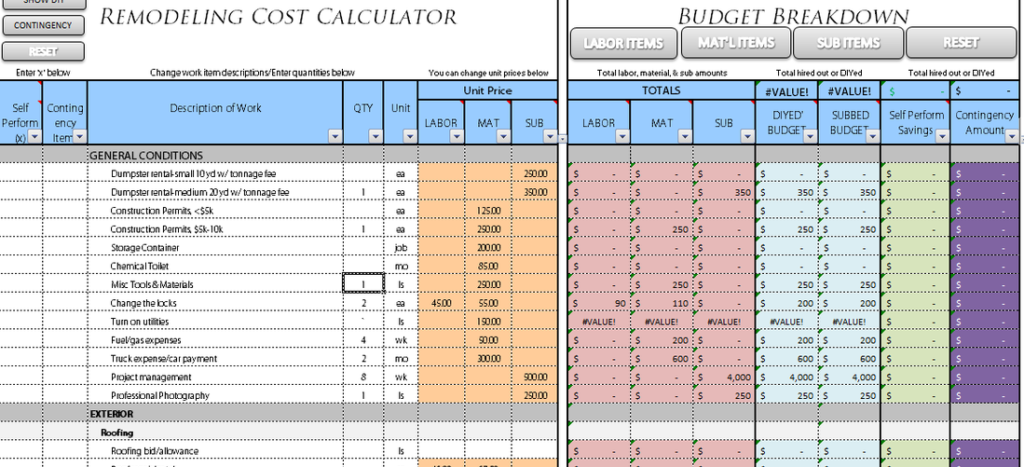Many people often think that when the cost seems out of proportion to the actual materials and labor required to complete the job, the difference is lining the contractor’s pockets.
Believe it or not, despite the fact that remodeling can seem expensive, it’s not a highly profitable business, especially when you consider the amount of risk a contractor has to assume every time he or she takes on a new project. Plus, the amount of effort it takes to keep a project on track. In addition to the actual labor and materials, there are so many other expenses every successful contractor must figure into the price in order to survive.
Without having a basic understanding of this, you might simply disqualify one or more of the actual professional contractors you have considered simply by believing that the price is too high.
The following is a list of some of the key elements that make up overhead in every successfully managed remodeling company. If one or more of these essential elements is missing, the company’s ability to manage your project and provide quality service drops considerably.
- Material price increases, which might not be billable once a job is quoted
- Warranty repairs
- Tools and equipment
- Trucks, repairs and maintenance, fuel
- Continuing education, training and industry events.
- Computers and software
- Business loans and interest
- Accountant’s fees
- Production supervision and management
- Advertising, marketing and sales costs
- Telephone, cell phones, pagers
- Office rent
- Office supplies
- Stationery and printing expenses
- Website hosting, and internet
- Worker’s compensation and liability insurance
- Health insurance
- Paid vacations and holidays
- Staff meetings
- Payroll expenses
- Office administration and management
- Time doing “free” estimates
These are just some of the items that a professional contractor has to account for. When you consider that all of these items have to be paid for out of the money that’s left after paying for labor and materials, it’s hard to believe remodeling does cost even more!
This all adds up to a substantial amount of money. In order to cover overhead, a contractor typically must add between 40-60 percent (or more) depending on various factors of the actual cost of labor and materials required to complete your project. Again, this is just to cover overhead expenses. It doesn’t include profit. Most professional contractors try to maintain a 5-10 percent profit when all is said and done. Without a profit, the contractor will eventually go out of business.
The next time you receive a price from a contractor that seems too high, don’t make assumptions. He might very well just be trying to pay for the very things that allow him to survive and provide a good, reliable service to you and a good environment for his employees. Beware of the contractor that tells you his prices are low because he keeps his overhead down. Chances are high that there will be trouble ahead.










